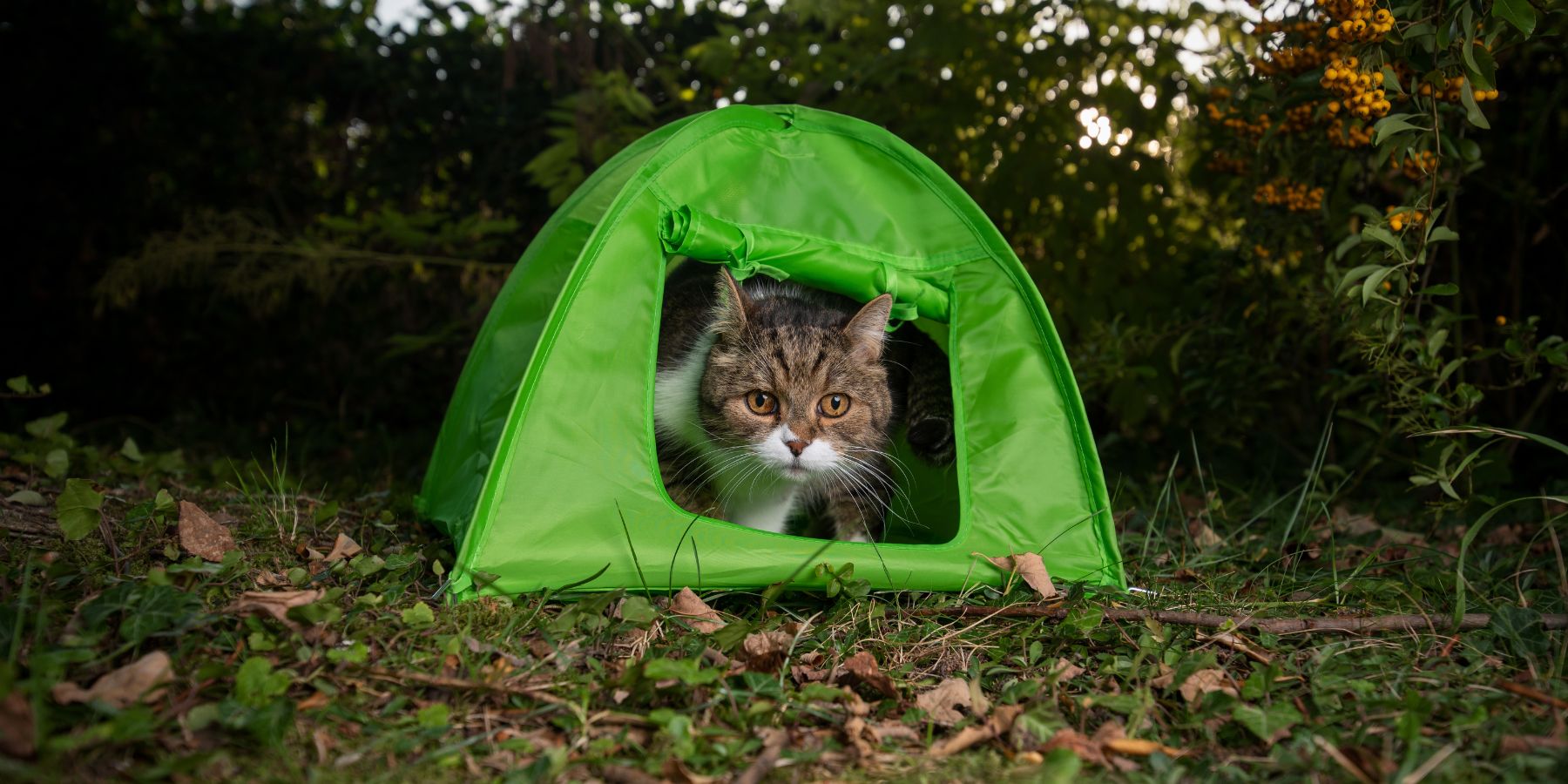Camping with cats can be a rewarding experience, offering a unique opportunity to bond with your feline friend in the great outdoors. However, ensuring the safety of your cat is paramount. In this guide, we will explore essential safety tips for taking your cat camping, covering everything from preparation to campsite management.
Pre-Camping Preparation
Health Check-up
Before embarking on your camping trip, a visit to the vet is essential. Ensure your cat is up-to-date with vaccinations, and consider preventive treatments for fleas and ticks.
Training and Acclimatization
If your cat isn’t used to the outdoors, start by acclimatizing them to a harness and leash. Gradually introduce them to outdoor environments, like your backyard, to build their confidence.
On the Road
Secure Transportation
When traveling, your cat should be in a secure carrier. This not only protects them in case of sudden stops but also prevents them from escaping in unfamiliar territory.
Frequent Breaks
During long drives, take regular breaks to allow your cat to stretch, use the litter box, and drink water. This can help reduce their stress levels.
At the Campsite
Choosing the Right Spot
When selecting a campsite, look for areas that are safe and not too crowded. Avoid places with heavy traffic or known wildlife threats.
Secure and Familiar Environment
Once at the campsite, set up a secure area for your cat. Bring familiar items like their bed or blanket to make them feel at home.
Leash and Harness
Always keep your cat on a leash when outside the tent or vehicle. This prevents them from wandering off and encountering dangers like wildlife or toxic plants.
Camping with Cats: Exploring Safely
Supervised Exploration
While exploring, closely supervise your cat. Keep them away from areas where they could get lost or stuck, such as steep slopes or dense underbrush.
Avoiding Wildlife Encounters
Be aware of the local wildlife and keep your cat away from areas where they might encounter predators or aggressive animals.
Night Safety
Secure Overnight Stays
Ensure your cat is safely inside the tent or vehicle at night. This protects them from nocturnal predators and the chill of the night.
Visibility
Consider using a collar with a bell or a reflective tag to keep track of your cat’s whereabouts, especially in the dark.
Emergency Preparedness
First Aid Kit
Carry a basic pet first aid kit. Familiarize yourself with basic cat first aid procedures and the location of the nearest veterinarian to your campsite.
Identification
Ensure your cat has a collar with ID tags, and consider microchipping if you haven’t already. This can be invaluable if they get lost.
FAQs
Q: How do I protect my cat from insects and pests?
A: Use vet-approved flea and tick prevention products. Avoid areas with high bug activity, and consider a bug net for your tent.
Q: Is it safe to let my cat drink from natural water sources while camping?
A: No, always provide clean, fresh water for your cat to prevent them from drinking from potentially contaminated sources.
Q: What should I do if my cat gets lost while camping?
A: Keep a recent photo of your cat, and contact the nearest animal shelters and local authorities immediately. Having your cat microchipped can greatly aid in their
In conclusion, while camping with cats requires thorough preparation and vigilance, it can be an immensely enjoyable experience for both you and your feline companion. By following these essential safety tips and being prepared for emergencies, you can ensure a fun and safe outdoor adventure with your beloved cat. Remember, understanding your cat’s needs and comfort levels is key to a successful camping trip.


